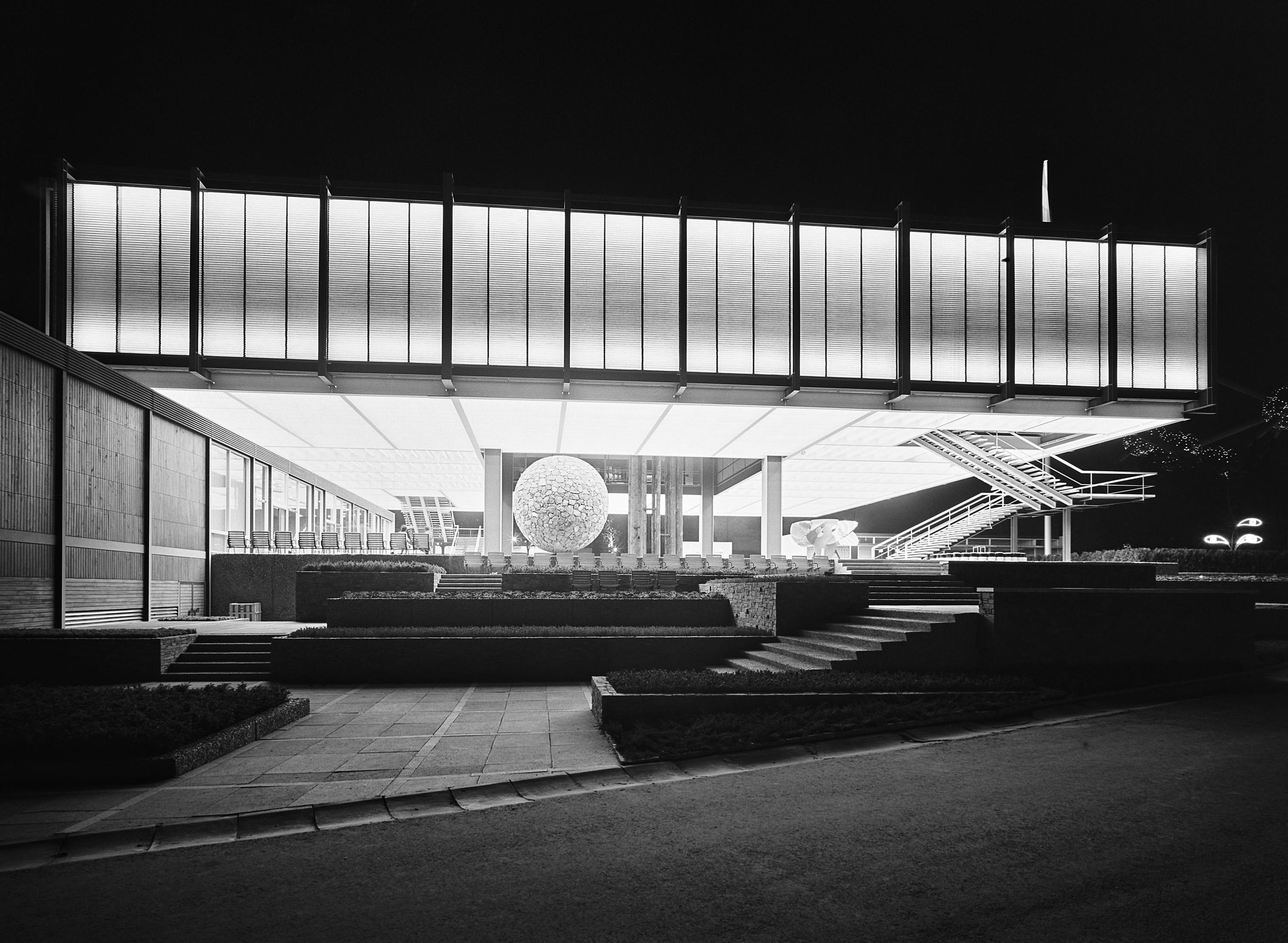
Expo, Brussels 1958
Whether Heinrich Heidersberger traveled to Brussels in 1958 for the World’s Fair out of professional curiosity or for a specific commission can no longer be pieced together. From his photos of the still-deserted German Pavilion, designed by Sep Ruf and Egon Eiermann, it could be surmised he had been given the opportunity to practice his craft prior to the official opening. His photographs of the overall eight rectangular, strictly formalistic pavilions, tied together by a bold, elevated catwalk, communicate the reserved statement the Federal Republic of Germany sought to convey during the post-war period—in stark contrast to the ostentatious predecessor Albert Speer realized in 1937 for the National Socialists in Paris. The transparent walls of the pavilions portrayed in Heidersberger’s images reveal a view of the forest behind them, expressing restraint rather than a demonstration of power.
By comparison, Heidersberger also photographed other prestigious national buildings—at times anecdotally, like the Finnish pavilion, from which three nuns are emerging, at times futuristically, like the Austrian pavilion by Karl Schwacher, illuminated from within on a pitch-black night. In some cases, he focused on a single building element, such as the US Pavilion’s circular, web-like skylight reminiscent of a turbine. But as a photographer of contemporary architecture, he had little interest in the exhibition presented there under the heading Research for the Good of Humanity, preferring instead to concentrate on eye-catching facade elements, railings, or tapestries and works of art.
Naturally the photographer also captured the emblems of the Expo in his own visual language: such as the nighttime image of the “arrow of civil engineering”—the United Nations dome designed by Hugo Van Kuyck, transformed by Heidersberger’s photographic art into an abstract painting—or close-ups of the Atomium. The only surprise is the absence of what was likely the World’s Fair most audacious building: the pavilion Le Corbusier realized together with composer Edgar Varèse and designer Iannis Xenakis as a poème électronique for the Dutch company Philips.









